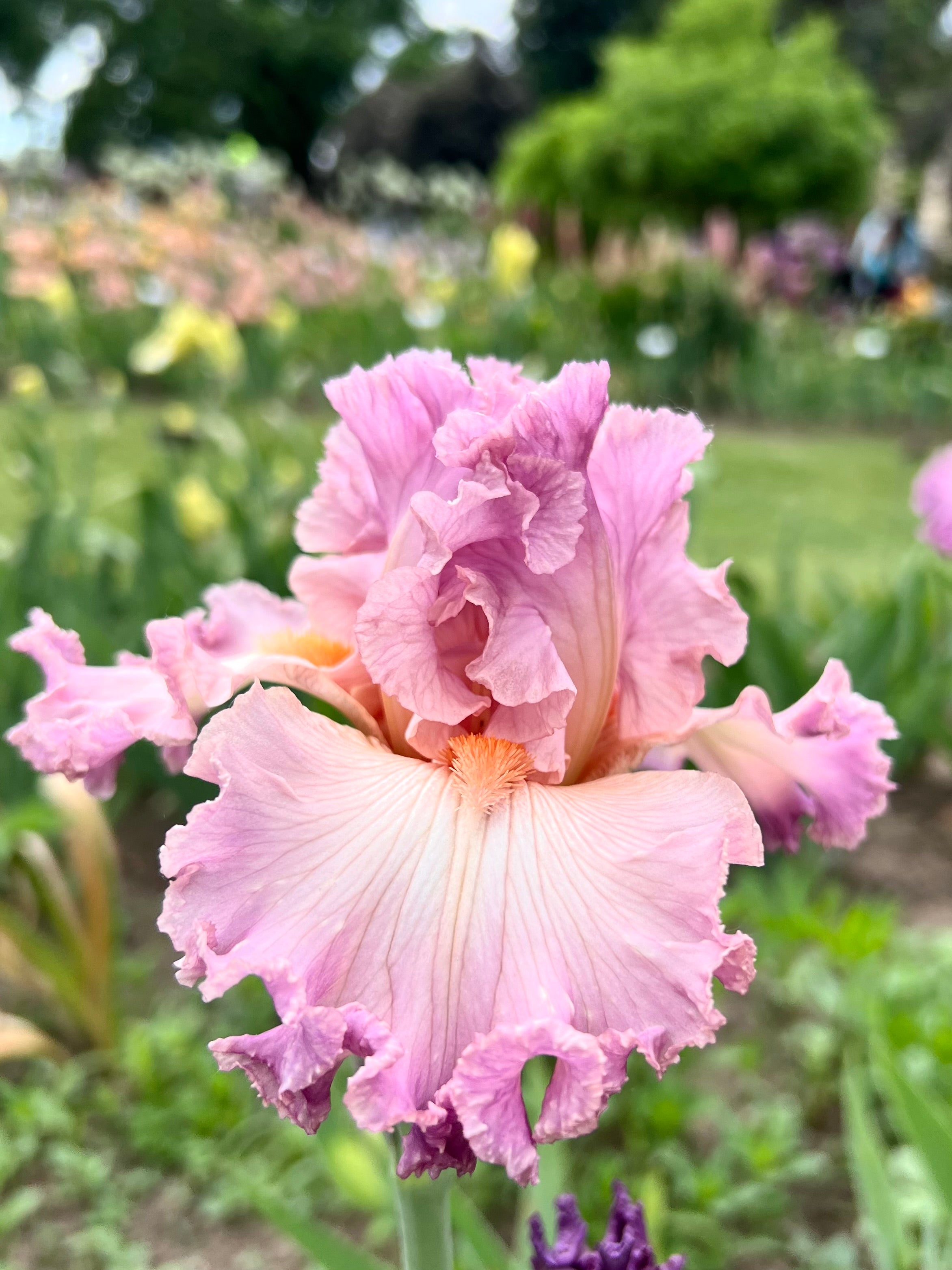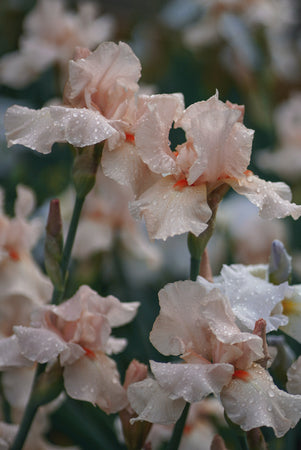Why You Should be Growing Bearded Iris, and How to Grow Them

Bearded Iris was always a little outdated in my mind, it wasn't until I got into flower farming that I realized there are so many beautiful varieties of these spring blooming focal flowers. I am lucky enough to live close to one of the biggest iris growers in the United States, Shreiner's Iris, so this spring I took a trip to their show gardens and was mesmerized by the blooms, I wasn't prepared to fall in love with them like I did.
There are many reasons to add bearded iris to your garden, first of all, is for their beauty. I was so amazed at the unique and beautiful color combinations found in the show gardens at Shreiner's Iris. I've never seen focal flowers in the warm grays, soft tans, and different tints of blush pink and champagne, like I found in the bearded iris. These are colors that are highly coveted in the flower world, especially if you love unique and beautiful floral arrangements that you can't find in the grocery store.

Bearded Iris extends spring's beauty by coming into bloom after the first flush of color from tulips and daffodils. You will be able to walk out to your garden in the spring after the tulips and daffodils are fading, and your iris, peonies, columbine, and clematis and allium will all be exploding into full bloom, extending your ability to make gorgeous arrangements from your cutting garden.
Iris has big statement making blooms, with multiple blooms per stem, as the first flower fades, you snap it off and more will continue to open. The average vase life of iris is 5-7 days, cut the iris just as the blooms start to show color and come out of their sheath for the longest vase life.
Bearded Iris is easy to grow, you order the rhizomes in the summer, they are shipped to you at planting time, around the end of summer, and you simply dig in compost and a little all-purpose organic fertilizer, make a shallow little hole and lay your iris rhizome horizontally, being careful to leave a little of the rhizome showing about the surface of the soil when you cover. Iris has thick fleshy roots called rhizomes, and they can be prone to rotting so well-draining soil is ideal, as well as 6-8 hours of full sunlight per day. Your iris will bloom the first season and come back every year.
After 2 or 3 years, your iris may need to be divided to continue to have beautiful full flowering. To divide iris, in July, or after the iris blooms have faded, cut back the flat sword-like leaves of the iris to 1/3 their original height with a good sharp pair of garden shears, then dig up the clump and separate into sections, making sure each section has at least one set of 3-4 leaves. The middle of the clump will be old and less productive and can be tossed, keep the outer sections, but also toss any rhizomes with holes from pests or soft and squishy parts. After dividing your iris clumps, you will have increased the number of irises in your garden and may wish to share or trade with other gardeners. I remember my mom always having new gardeners come over to collect boxes of root clumps after she had divided her iris or other perennials, and she would add to her garden by getting divisions from other gardeners as well.
In the fall after your first frost, cut back all the iris leaves and dispose of them. There is a pest in the Eastern United States called the iris borer, and it lays eggs in the leaves, so by disposing of the iris leaves, you will end the life cycle of the borer. The iris borer in a pink caterpillar that causes disease in iris by boring into the leaves and rhizomes and weakening the plant making it susceptible to bacteria and virus.
In the very early spring, your irises will be getting ready for their coming show of flowers, so this is a good time to pamper them with a shovel-full of compost and a little sprinkle of all-purpose organic fertilizer again. Remember not to completely cover the rhizome with the compost as iris like to have a little of their thick fleshy roots above the ground. (I did not see this at Shreiner's Iris, but it may be because of the soil type they are growing in).
During this period of growth, from very early spring all the way through flowering, you will want to water your iris if they aren't getting enough water from the spring rains. Then you can sit back and wait for the show, Iris has 6 large and often frilly petals, 3 rise up and these are called rises, and 3 fall down and these are called falls. The unique beard is a fuzzy little caterpillar looking thing that is in the center of the falls and helps lead insects to the pollen in the center of the flower.
Bearded Iris reminds me a bit of southern belles, all decked out in their fanciest ball gowns. They are such a unique and truly gorgeous flower, I hope this article has helped you realize that they are easy to grow, they are hardy in zones 3-9 and can be grown almost everywhere, so if you have a little extra room in your garden or even in a pot, try bearded iris and next spring you will be happy you did when they come into flower just when you thought spring's show was over.
You can shop our bearded iris collection here, I suggest buying 3-5 rhizomes of the varieties you love the most to really make a statement in your garden and also to have enough flower to cut from to make and share beautiful spring flower arrangements.


Comments